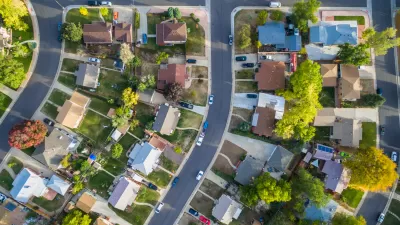Inconsistent application of fair housing laws across the country means tenants and home buyers of color and from other protected classes must educate themselves and be their own advocates.

As a term, fair housing seems like a pretty straightforward thing: under federal (and often state) law, it is illegal to discriminate against someone based on their race, color, religion, sex, national origin, disability, or familial status when renting, selling, or financing housing. Done and dusted, right? Not exactly, says Justin Bower, director of community and environmental planning for the Houston-Galveston Area Council, who recently sat down with Laura Onyeneho of the Defender for a Q&A in honor of Fair Housing Month.
Just because there are laws on the books doesn’t mean landlords, homeowners, or lenders automatically know the law and stop discriminating. Instead, Bower says, implementation of the law largely falls on tenants and home buyers from protected classes to recognize and report when they are being discriminated against, which means the law is not always consistently enforced. And discriminatory actions in housing procurement aren’t always easy to spot. “Sometimes, discrimination happens in more hidden ways, like when landlords have rules that make it hard for certain groups of people to rent apartments or when they don’t help people with disabilities live comfortably,” Bower says.
The Defender article provides an easily digestible breakdown of red flags in the sale and rental of housing, as well as mortgage lending, for tenants and home buyers to be on alert for when finding their next place. Onyeneho also explains the reason behind fair housing laws and why fair housing is so important to the ongoing fight against systemic inequality, which deeply affects marginalized communities.
FULL STORY: Fair Housing Laws: Do you know your rights?

Alabama: Trump Terminates Settlements for Black Communities Harmed By Raw Sewage
Trump deemed the landmark civil rights agreement “illegal DEI and environmental justice policy.”

Planetizen Federal Action Tracker
A weekly monitor of how Trump’s orders and actions are impacting planners and planning in America.

The 120 Year Old Tiny Home Villages That Sheltered San Francisco’s Earthquake Refugees
More than a century ago, San Francisco mobilized to house thousands of residents displaced by the 1906 earthquake. Could their strategy offer a model for the present?

Ken Jennings Launches Transit Web Series
The Jeopardy champ wants you to ride public transit.

BLM To Rescind Public Lands Rule
The change will downgrade conservation, once again putting federal land at risk for mining and other extractive uses.

Indy Neighborhood Group Builds Temporary Multi-Use Path
Community members, aided in part by funding from the city, repurposed a vehicle lane to create a protected bike and pedestrian path for the summer season.
Urban Design for Planners 1: Software Tools
This six-course series explores essential urban design concepts using open source software and equips planners with the tools they need to participate fully in the urban design process.
Planning for Universal Design
Learn the tools for implementing Universal Design in planning regulations.
Clanton & Associates, Inc.
Jessamine County Fiscal Court
Institute for Housing and Urban Development Studies (IHS)
City of Grandview
Harvard GSD Executive Education
Toledo-Lucas County Plan Commissions
Salt Lake City
NYU Wagner Graduate School of Public Service





























